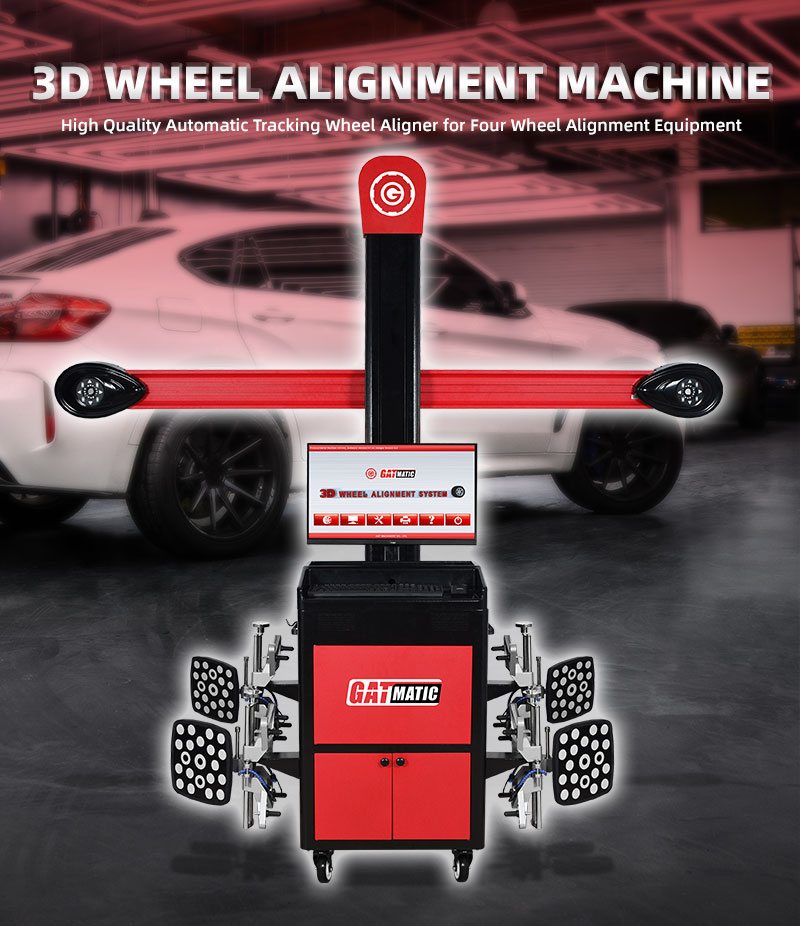The Science Behind 3D Wheel Alignment Technology.
When it comes to your vehicle, you might think about the engine’s roar, the smoothness of the ride, or the allure of the latest car stereo. But there’s one often-overlooked factor that can sneak up on you, causing trouble and a serious dent in your wallet: wheel alignment. In this article, we’ll dive into “The Effects of Poor Wheel Alignment on Tire Wear,” unraveling the mysteries of why your tires might be aging faster than you’d like and what you can do to prevent it.
I. Signs of Trouble: Is Your Car Trying to Tell You Something?
You might not be a tire whisperer, but your vehicle often gives you clear hints when its wheel alignment isn’t up to snuff. Here are the telltale signs:
- Uneven Tire Wear: Is one side of your tire wearing down faster than the other? This uneven wear, often described as “feathering” or “cupping,” is a red flag.
- Steering Wheel Misalignment: Does your steering wheel sit at an odd angle when you’re driving straight? If you need to keep it off-center, your alignment could be to blame.
- Vehicle Pulls: Does your car seem eager to change lanes without your permission? A vehicle that drifts to one side when you take your hands off the wheel is likely a victim of poor alignment.
- Tire Vibrations: If you feel unusual vibrations through the steering wheel or the seat, it could be the result of misaligned wheels.
- Squealing Tires: Are your tires singing an unpleasant tune, especially during turns? This is another sign that your alignment may be askew.
II. What Causes Poor Wheel Alignment?
Wheel alignment issues don’t just appear out of thin air; they have their reasons, and some of them might surprise you:
- Potholes and Bumpy Roads: We’ve all cursed those pesky potholes and uneven road surfaces. But did you know they can seriously throw off your wheel alignment? Hitting a particularly nasty pothole can knock your wheels out of whack.
- Curbs and Obstacles: Accidentally grazing a curb or colliding with an obstacle can have a similar effect. So, watch out for those parking blocks in the grocery store lot!
- Suspension System Woes: If your vehicle’s suspension system is compromised, it can lead to wheel alignment issues. Shocks, struts, and other components play a crucial role in keeping your tires in check.
- Worn-out Components: Over time, various components of your vehicle’s steering and suspension system can wear down. Ball joints, bushings, and tie rod ends can all impact your alignment.
III. The Domino Effect: How Poor Alignment Impacts Your Tires
So, what happens when your wheels aren’t playing nicely? Let’s explore the impact of poor alignment on your tires:
- Uneven Tire Wear: This is where the rubber meets the road, quite literally. When your wheels are out of alignment, certain parts of your tires will bear the brunt of the load while others get a vacation. The result? Uneven tire wear. If you’ve ever seen tires that look like they’ve been gnawed on by an oversized rodent, it’s a classic case of poor alignment at work.
- Reduced Tire Lifespan: Tires are a significant investment, and no one wants to replace them prematurely. However, poor alignment can slash your tire’s lifespan considerably. You’ll be buying new rubber much sooner than you expected.
- Poor Fuel Efficiency: Misaligned wheels don’t just punish your tires; they also make your engine work harder. The extra resistance can significantly reduce your fuel efficiency, forcing you to make more pit stops at the pump.
- Safety Concerns: Proper wheel alignment is essential for your safety. If your vehicle doesn’t handle as it should, you might find yourself in a sticky situation on the road, especially in emergency situations.
IV. Getting Back on Track: How to Solve the Alignment Puzzle
Now that you know the dire consequences of poor wheel alignment on tire wear, let’s talk about how you can get things back on track:
- Alignment Service: The most straightforward solution is to schedule an alignment service with your trusted mechanic. They’ll use specialized equipment to adjust your wheels precisely. It’s a relatively quick and affordable process that can save you a lot in the long run.
- Regular Checkups: Preventing alignment issues is often easier than fixing them. Consider regular checkups and alignments, especially if you drive in areas with poor road conditions.
- Avoiding Obstacles: Watch out for potholes, curbs, and other obstacles. While you can’t always dodge them, being more attentive can save your alignment and your tires.
- Suspension Maintenance: Regular maintenance of your suspension system can also go a long way in preventing alignment issues. If you notice any unusual noises or handling problems, get your suspension system checked promptly.
- Tire Rotation: Rotating your tires regularly can help distribute wear more evenly. This, in conjunction with proper alignment, can significantly extend the life of your tires.
Conclusion
The Effects of Poor Wheel Alignment on Tire Wear” are indeed far-reaching and can lead to a host of troubles, from uneven tire wear to safety concerns on the road. It’s a reminder that while we might focus on the power under the hood and the comfort of our seats, the humble alignment of our wheels plays a crucial role in our overall driving experience.
So, the next time you notice your vehicle exhibiting the signs of poor alignment, don’t ignore them. Your tires and your wallet will thank you for taking action promptly. Whether it’s a professional alignment service or just paying more attention to the road, keeping your wheels in line is the key to a smooth and cost-effective journey. After all, it’s not just about the destination, but also how you get there!
FAQs
Q1: How often should I check my wheel alignment?
It’s a good idea to have your alignment checked once a year or if you notice any of the signs mentioned earlier. Additionally, it’s wise to get an alignment check after hitting a pothole or a curb.
Q2: Can I align my wheels myself?
While there are DIY kits available, it’s best to leave wheel alignment to the professionals. The precision required to get it right is something that only a skilled mechanic can provide.
Q3: How much does wheel alignment cost?
The cost can vary depending on your location and the type of vehicle. On average, a simple alignment can cost between $50 and $100.
Q4: Can poor alignment affect other parts of my vehicle?
Absolutely. Poor alignment can cause undue stress on your vehicle’s suspension and steering components, potentially leading to more extensive and expensive repairs down the road.
Q5: Can wheel alignment fix tire wear, or do I need new tires?
It depends on the severity of the wear. In some cases, aligning the wheels may help even out the wear, but severely damaged tires might need replacement.
Describe Your Needs In Detail!
We will carefully evaluate your needs and give professional solutions.



